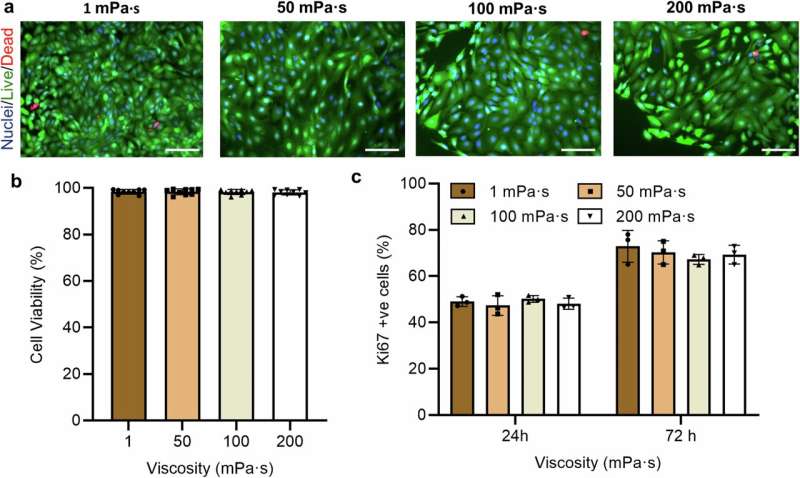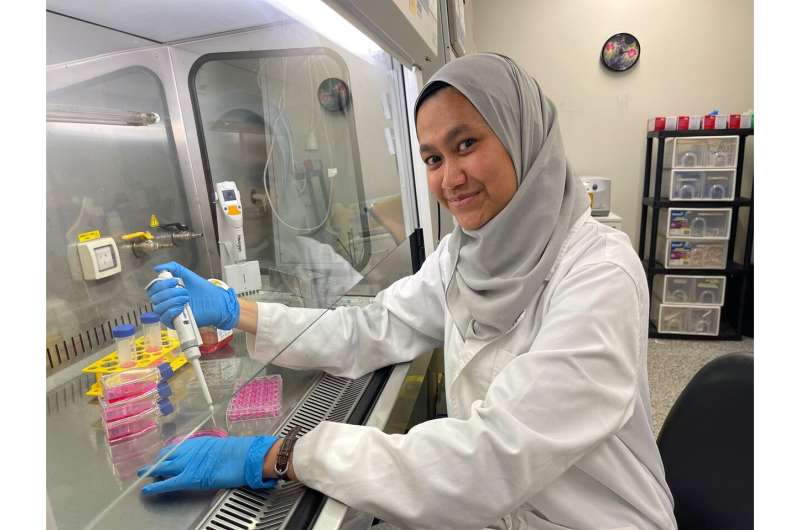This article has been reviewed according to Science X's editorial process and policies. Editors have highlighted the following attributes while ensuring the content's credibility:
fact-checked
peer-reviewed publication
trusted source
proofread
Fluid 'stickiness' in female reproductive tract could influence fertility

In a study providing important new insights into the development of the female reproductive tract and fertility, researchers have revealed how the thickness of fluid surrounding the egg can impact the cellular structure of the fallopian tube and how well the egg or embryo travels along it.
Published in Nature Communications, the Monash University study sheds light on how variations in the "stickiness" or viscosity of the fluid in the female reproductive tract influence how cells are modified to facilitate the transport of eggs for fertilization.
Led by Melati Abdul Halim, a Ph.D. candidate in the Department of Mechanical and Aerospace Engineering, the study highlights the potential for new treatments that could mimic or modify the natural stickiness of fluids in the reproductive system, offering hope for advancements in fertility therapies.
"Imagine the difference between walking through water versus thick mud. This is what it's like for tiny cells in the female reproductive tract, where the stickiness of the fluid can vary," Halim said.
"When the fluid is thicker, the extra resistance causes the cells to change their behavior. Some cells start growing tiny hair-like structures called cilia, which help move things like eggs along the reproductive tract. The thicker the fluid, the more cilia these cells produce, and the more coordinated their movements become. This coordinated beating pattern can facilitate the formation of metachronal waves, essential for the transport of eggs and embryos."

Corresponding and senior author Dr. Reza Nosrati said the findings suggest that the natural stickiness of fluid in our bodies could play a key role in processes like fertilization.
"The study suggests that the elevated viscosity at certain stages of the menstrual cycle could be a natural mechanism to enhance the formation and coordination of cilia, thus facilitating fertilization. This important aspect of natural fertilization and the role of higher viscosity fluid in the reproductive tract may need more careful evaluation as part of infertility diagnosis and assisted reproduction practices," Dr. Nosrati said.
"It provides insights into how the viscosity (thickness, stickiness) of extracellular fluid influences the behavior of epithelial cells lining the fallopian tubes and could be key to understanding and potentially treating fertility issues."
More information: Melati S. Abdul Halim et al, Fallopian tube rheology regulates epithelial cell differentiation and function to enhance cilia formation and coordination, Nature Communications (2024). DOI: 10.1038/s41467-024-51481-9





















